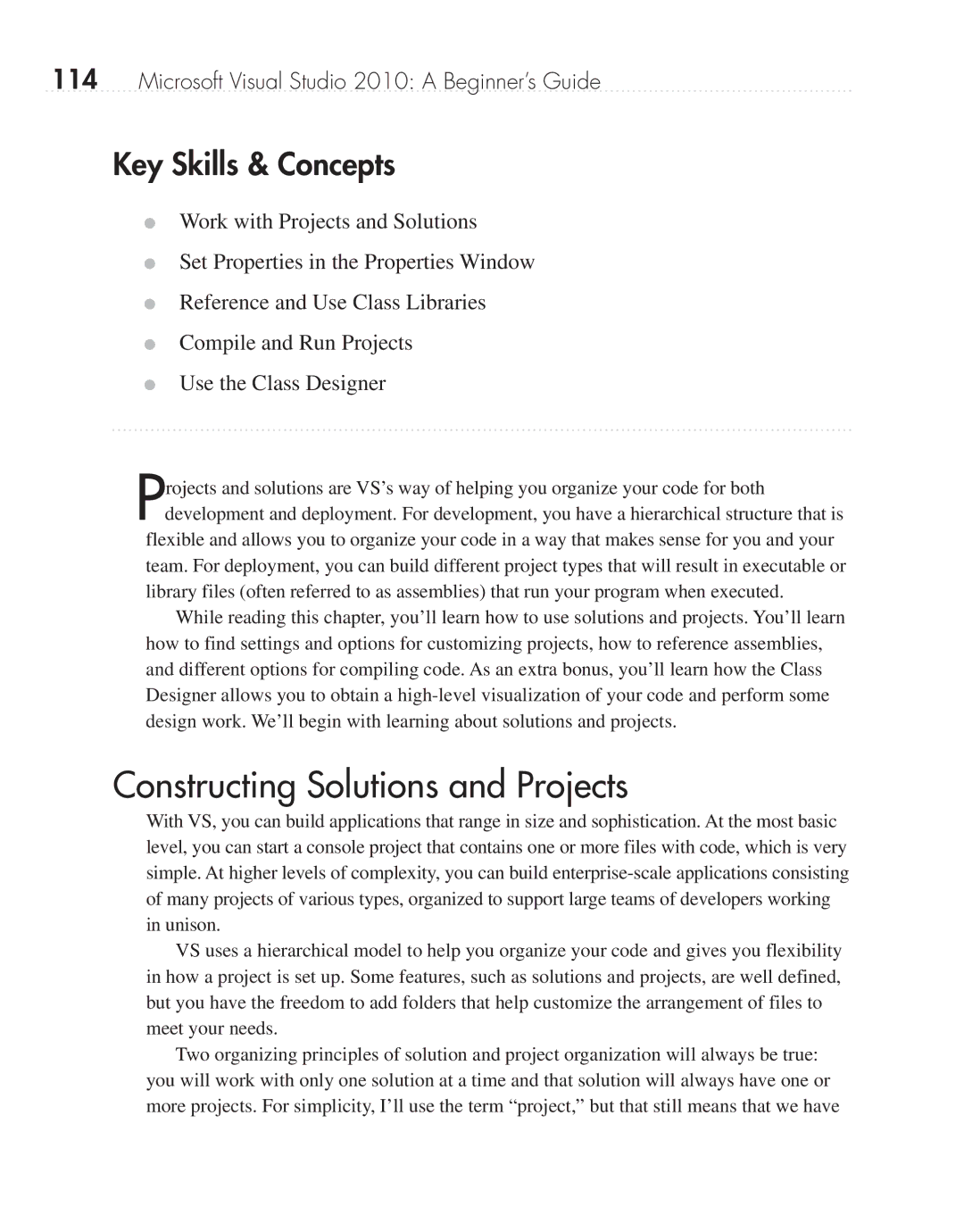
114Microsoft Visual Studio 2010: A Beginner’s Guide
Key Skills & Concepts
●Work with Projects and Solutions
●Set Properties in the Properties Window
●Reference and Use Class Libraries
●Compile and Run Projects
●Use the Class Designer
Projects and solutions are VS’s way of helping you organize your code for both development and deployment. For development, you have a hierarchical structure that is
flexible and allows you to organize your code in a way that makes sense for you and your team. For deployment, you can build different project types that will result in executable or library files (often referred to as assemblies) that run your program when executed.
While reading this chapter, you’ll learn how to use solutions and projects. You’ll learn how to find settings and options for customizing projects, how to reference assemblies, and different options for compiling code. As an extra bonus, you’ll learn how the Class Designer allows you to obtain a
Constructing Solutions and Projects
With VS, you can build applications that range in size and sophistication. At the most basic level, you can start a console project that contains one or more files with code, which is very simple. At higher levels of complexity, you can build
VS uses a hierarchical model to help you organize your code and gives you flexibility in how a project is set up. Some features, such as solutions and projects, are well defined, but you have the freedom to add folders that help customize the arrangement of files to meet your needs.
Two organizing principles of solution and project organization will always be true: you will work with only one solution at a time and that solution will always have one or more projects. For simplicity, I’ll use the term “project,” but that still means that we have
